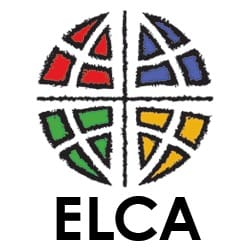|
By Rebecca Walton
You may have heard that this past August, the ELCA declared itself a “sanctuary denomination”—the first North American denomination to do so. But what does that mean? And what might it mean for us, specifically, here at Prince of Peace? The ELCA has produced some talking points that do a good job of answering the first question. I’ll quote at length from these talking points below, and you can download the complete set of talking points from the ELCA website if you’d like more details. “In its simplest form, becoming a sanctuary denomination means that the ELCA is publicly declaring that walking alongside immigrants and refugees is a matter of faith. The ELCA Churchwide Assembly, the highest legislative authority of the ELCA, declared that when we preach on Sunday that Jesus told us to welcome, we will use our hands and voices on Monday to make sure it happens. Being a sanctuary denomination does not call for any person, congregation or synod to engage in any illegal actions. We have a broken system regarding immigration, refugees and asylum-seekers. To declare ourselves a sanctuary church body is to say that we seek to provide concrete resources to assist the most vulnerable who are feeling the sharp edges of this broken system. […] Being a sanctuary denomination will look different in different contexts. We cannot mandate or direct our congregations and ministries to respond in specific ways. Each must work out what this means for them in their context. While we don’t yet know the full scope of the work that this declaration will open for the church, we do know that our faith communities are already doing sanctuary work. Sanctuary for a congregation may mean hosting English as a Second Language (ESL) classes; marching as people of faith against the detention of children and families; providing housing for a community member facing deportation; or, in some congregations, having thoughtful conversations about what our faith says about immigrations. All of these are a step closer to sanctuary in our faith communities and sanctuary in our world for people who must leave their homes.” The ELCA has developed quite a few materials for folks who are interested in learning more. For example, in October the Rocky Mountain Synod offered a webinar attended by our own Karin DeJonge-Kannan, as well as 31 other folks from across the RMS. With her permission, I share here some of what she learned. The central question guiding the webinar was, “How can we best live out our desire to be a church of welcome and safety for God’s most vulnerable children?” Facilitators (Erin Power, Peter Serverson, Mary Campbell, Ruth Hoffman, and Bishop Jim Gonia) pointed out that, as a church, we are engaged in the reality of what is—our neighbors, co-workers, and the people sitting with us in the pews include asylum seekers, refugees being re-settled in the USA, travelers who have overstayed their visas, people who entered without proper documentation, whether as adults or as children—and also in advocacy for what could be: for example, just laws and policies, at both state and federal levels. The Rocky Mountain Synod borders Mexico, which means border issues have long been part of our context. Facilitators pointed out that we have a unique opportunity to learn about immigration and help educate others about immigration along a wide range of perspectives. As noted in the ELCA talking points document quoted above, many churches (including some in our synod) are already engaging in work that enacts the sanctuary declaration and have engaged in this work long before the declaration was officially adopted in August. For example, Lutheran Family Services of the Rocky Mountains is a long-standing ministry that operates in Colorado and New Mexico, working with refugee re-settlement in those two states. The Guardian Angel program was founded to be the church in courtroom situations. Participants in this program accompany people as a source of support, pray with them, and help them not be alone during court proceedings. The program started in Southwest California, but now it is in ten locations throughout the ELCA, including one in Denver, which is part of the Rocky Mountain Synod. As detailed in the webinar and other ELCA resources, what it means to be part of a sanctuary denomination varies congregation by congregation and should be informed by local context. This time of transition, when we are praying for God to send us a new pastor, seems an appropriate time to begin (or continue!) to educate ourselves about issues of advocacy and theology. In educating ourselves, we can prepare for working together with a new minister in a new year to discuss how we live out the sanctuary declaration as a church—in our current actions and in future opportunities.
1 Comment
|
AuthorsThis blog is run by the council members of Prince of Peace Lutheran Church in Logan, UT. For more information, check out our church's website at princeopeace.org. Archives
July 2020
|

